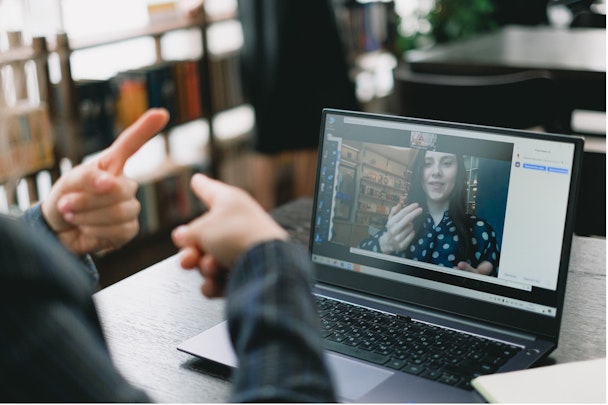As a Disability Access Ambassador, here's my plan to make the industry more accessible
AMV BBDO’s Mike Alhadeff, a newly appointed disability access ambassador for the British government, unveils his plan to open up the industry.

Change can be a funny thing. It can often feel like nothing has changed. But you look up and everything has changed. Long gone are the days of Don Draper which still linger in the popular imagination. Advertising today, of course, is a very different place and that includes when it comes to diversity and inclusion.
Advertisement
Advertising has made some big strides in a relatively short amount of time. Even in the brief time (a decade) I’ve spent in the industry, it feels like the ground has shifted from how we represent people in our ads to catering towards different demands. Barely a week seems to go by without the mention of D&I in a press release. And of course, this includes the subject of disability.
But the thing with change is that it never stops and nor should it. Whilst positive progress has been made in certain areas, there is clearly room for improvement in other areas. That’s why I’m delighted to be taking on the role of Disability Access Ambassador for advertising.
Advertisement
In short, each ambassador is selected by the government to improve the access and inclusion of people with disabilities within that industry.
So, what do I exactly plan to do?
Well, like any good strategist, I plan to tackle it like I would do with any brief – identify the problem (research), identify ways around the problem (strategy) and finally put results against them (KPIs.)
Luckily, regarding the first task, the Advertising Association’s All in Survey has already done a sterling job in identifying the problem. The All in Survey is the industry’s first ever audit of the representation and experience of different groups working within our industry, including those with disabilities.
Suggested newsletters for you
And sadly, it makes startling reading. Those that are defined as disabled are under-represented within our industry at just 9% vs. 20% in the working age population. Moreover, those with a disability already within the industry are more likely to have a poor experience with 22% likely to leave their organisation vs. 12% the industry average. So that’s the size of the problem and as a first port of call, it is imperative that more of the industry fills in the All in Census when it next comes around in March 2023.
It is clear then that there are two problems that we need to need to address – getting disabled people into the industry in the first place and keeping them there. If we aim to address the latter first, it is clear we need to make the workplace feel more inclusive, so people are encouraged to stay.
One way of doing this is engaging HR departments so they are aware of all they ways they can support disabled staff. In particular, increasing the visibility of the Access to Work scheme – which aims to provide in-work support such as a technological and transport assistance – is one-way disabled people can feel more supported in the workplace and therefore more likely to stay.
In addition, we need to increase the supply of disabled talent entering the building, particularly on the creative side of things, the lifeblood of our industry. A host of programmes have recently been set-up targeted at getting more diverse talent through the doors such as night schools and the like and therefore it would make sense to have one specifically targeted for those with disabilities (for the time being at least.)
It may also be helpful to reach out to some of the leading ad schools such as Watford and Lincoln and see how we can make those courses as inclusive as possible. Lastly, in recent years, the pinnacle of our industry, the Cannes Lions, has done a good job at creating supportive networks for those that our under-represented in our industry and therefore it should be no different when it comes to disability. If people feel like they belong, then they will.
And lastly, in terms of KPIs, again thanks to the Advertising Association, we now have the benchmarks we know we need to beat. So, it is my hope that some of these proposed initiatives will a) get the amount of disabled talent in the industry more representative of the national average; and b) decrease the amount of disabled talent leaving the industry.
The above is by no means an exhaustive list, and over the course of three years, priorities may change and different problems identified, but it should hopefully highlight the future direction of travel.
If you have any suggestions, please get in touch: alhadeffm@amvbbdo.com
MIke Alhadeff is senior strategist at AMV BBDO and a disability access ambassafor for the UK government

